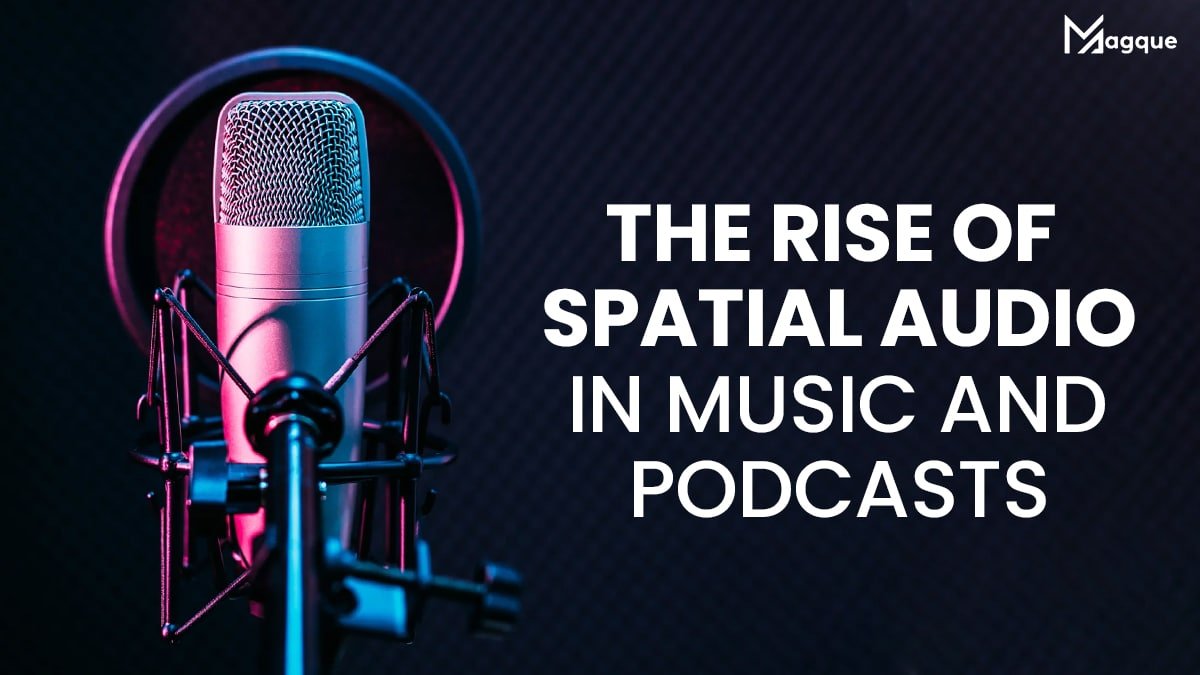Have you ever listened to a song and felt like you were in the studio with the artist? Or you’ve been engrossed in a podcast, feeling as if the host is speaking directly into your ear, creating an immersive experience unlike any other. If so, you may have experienced the magic of spatial audio.
What is Spatial Audio?
Spatial audio is a revolutionary technology that enhances the listening experience by creating a sense of depth and directionality in sound. Unlike traditional stereo sound, which delivers audio through two channels (left and right), spatial audio uses advanced algorithms to simulate 3D audio, allowing listeners to perceive sound from multiple directions.
How Does it Work?
Imagine yourself in a concert hall. The sound waves bounce off the walls, ceilings, and floors as the music plays, creating a rich and dynamic auditory environment. Spatial audio replicates this effect by manipulating sound waves’ timing, volume, and frequency to mimic how we hear in real life. This creates a more immersive and lifelike listening experience, transporting listeners to different sonic landscapes.
Applications in Music
For music enthusiasts, spatial audio opens up a new world of possibilities. Artists can now create immersive albums that make listeners feel as though they are inside the music itself. Instruments can be positioned around the listener, creating a sense of presence and intimacy previously unattainable. Whether it’s a symphony orchestra or a rock band, spatial audio allows musicians to express their creativity in ways never before possible.
The Future of Podcasting
But spatial audio isn’t just limited to music. Podcasters are also embracing this technology to create more engaging and immersive content. Imagine listening to a true crime podcast and feeling as though you’re right there at the crime scene or tuning into a storytelling podcast and being transported to distant lands with every word. Spatial audio adds a new dimension to podcasting, making it more captivating.
The Accessibility Challenge
While spatial audio holds great promise for the future of music and podcasting, there are still challenges to overcome. Accessibility remains a concern, as not all devices and platforms support this technology. Additionally, creating spatial audio content requires specialized equipment and expertise, which may be beyond the reach of many independent creators.
Bridging the Gap
Despite these challenges, the popularity of spatial audio is on the rise. Major streaming platforms like Apple Music and Spotify have already embraced this technology, offering listeners a growing library of spatial audio content to explore. As awareness and adoption continue to grow, we can expect to see more innovations in spatial audio technology, making it more accessible and user-friendly for creators and listeners alike.
In conclusion, spatial audio represents a significant evolution in how we experience music and podcasts. Creating immersive and lifelike audio environments enhances the listener’s engagement and enjoyment, opening up new possibilities for artistic expression and storytelling. As technology continues to advance and accessibility improves, spatial audio has the potential to revolutionize the way we listen to and interact with audio content. So, are you ready to enter the world of spatial audio and experience sound like never before? And be sure to explore Magque, your go-to source for the latest and most intriguing updates in the realms of informative tips & reviews!
FAQs
Q1. What exactly is spatial audio?
Spatial audio is a cutting-edge technology that creates a sense of depth and directionality in sound, making it seem like the audio comes from different directions around the listener. It simulates 3D audio environments, enhancing the listening experience and making it more immersive.
Q2. How does spatial audio differ from traditional stereo sound?
Traditional stereo sound uses two audio channels (left and right) to deliver sound. In contrast, spatial audio goes beyond that by replicating how sound waves interact with the environment. It manipulates factors like timing, volume, and frequency to create a lifelike auditory experience.
Q3. What are some applications of spatial audio in music?
In music, spatial audio allows artists to create immersive albums where instruments can be positioned all around the listener. This adds a new dimension to the listening experience, making it feel like you’re inside the music. Spatial audio is viral in genres like classical and electronic music.
Q4. How is spatial audio being used in podcasts?
Spatial audio is also revolutionizing the world of podcasts by adding depth and immersion to audio storytelling. Podcasters can use spatial audio to create more engaging narratives, making listeners feel part of the story. It’s especially effective for fiction, true crime, and immersive journalism.
Q5. What are the challenges and limitations of spatial audio?
While spatial audio offers exciting possibilities, there are challenges to overcome, such as accessibility and compatibility with different devices and platforms. Creating spatial audio content also requires specialized equipment and expertise, which may be a barrier for some creators. However, as awareness and adoption grow, these challenges are being addressed, paving the way for a more immersive audio future.
Read Also This:- Benefits of Lossless Audio for Audiophiles













